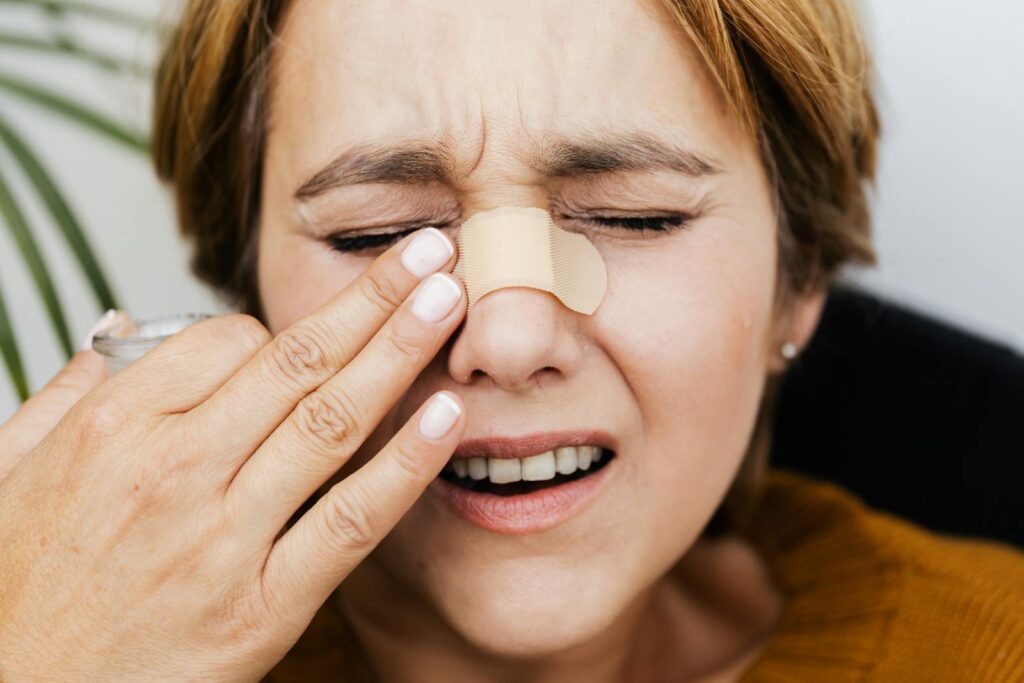Understanding Herniated Disc Pain
A herniated disc occurs when the soft inner core of a spinal disc pushes through its tough outer layer, putting pressure on nearby nerves. This can cause intense back pain, numbness, tingling, and weakness that radiates down the legs or arms. Herniated disc pain relief is essential for restoring your comfort and mobility, but many people worry that surgery is their only option. Fortunately, a variety of disc therapy and non-surgical disc treatment methods are available at a modern back pain clinic like Primary Health Clinic.
What Causes a Herniated Disc?
- Age-related disc degeneration
- Sudden heavy lifting or twisting motions
- Repetitive strain or poor posture
- Obesity or weak core muscles
- Trauma from falls or accidents
- Genetic predisposition to disc problems
Understanding these risk factors is important for both prevention and effective treatment. Whether your symptoms developed suddenly or have been growing over time, seeking early care from a back pain clinic can make all the difference in your recovery.
Recognizing Symptoms of Herniated Disc Pain
- Sharp or burning pain in the back or neck
- Pain radiating down the leg (sciatica) or arm
- Numbness, tingling, or weakness in the affected limb
- Pain that worsens with movement, sitting, or coughing
- Difficulty standing, walking, or performing daily activities
If you notice loss of bladder or bowel control, seek immediate medical attention. This rare symptom may indicate a serious complication that requires urgent care.
Benefits of Non-Surgical Disc Treatment
While some cases of herniated discs require surgery, the vast majority can be managed with non-invasive therapies. Non-surgical disc treatment at Primary Health Clinic is designed to:
- Reduce pain and inflammation
- Restore normal movement and function
- Strengthen supporting muscles
- Promote natural disc healing
- Prevent recurrence and future injuries
Our integrative approach ensures you receive a tailored treatment plan to address your specific needs.
Key Non-Surgical Herniated Disc Pain Relief Methods
- Physical Therapy: Customized exercises, stretches, and movement retraining reduce pressure on the disc, improve flexibility, and strengthen core muscles.
- Disc Therapy: Gentle spinal traction and decompression techniques relieve nerve compression and support disc recovery. Learn more on our sciatica pain relief and nerve decompression page.
- Manual Therapy: Hands-on care, including massage and joint mobilization, relaxes tense muscles and improves alignment. Discover more about manual therapy for whiplash stiffness.
- Medication Management: Non-steroidal anti-inflammatory drugs (NSAIDs) and muscle relaxants are sometimes prescribed to manage acute pain and inflammation.
- Hot and Cold Therapy: Alternating heat and ice packs can soothe painful areas and minimize swelling.
- Ergonomic and Lifestyle Counseling: Guidance on posture, lifting, and activity modifications helps prevent symptom flare-ups and future injuries.
How Does Spinal Decompression Work?
Spinal decompression is a highly effective, non-surgical disc treatment that uses gentle, controlled traction to stretch the spine. This creates negative pressure inside the disc, encouraging bulging or herniated material to return to its proper position and relieving pressure on nearby nerves. Key benefits include:
- Significant pain reduction for many patients
- Non-invasive and drug-free
- No downtime or recovery required
- Promotes circulation and natural healing
- Can be combined with other therapies for maximum results
Sessions are comfortable and typically last 20-30 minutes, with most patients noticing improvement within a few weeks.
Preventing Future Disc Problems
- Maintain a healthy weight to minimize spinal stress
- Strengthen your core muscles with regular exercise
- Use proper lifting techniques—bend at the knees, not the waist
- Stay active but avoid high-impact activities when recovering
- Invest in ergonomic chairs and workstations
- Take breaks to stretch and move throughout the day
Prevention is just as important as treatment. Simple lifestyle adjustments can greatly reduce your risk of herniated disc recurrence.
FAQs About Non-Surgical Disc Therapy
- How long does it take to feel better?
Most patients experience noticeable relief within a few weeks of consistent, non-surgical disc treatment, though individual results may vary. - Is disc therapy safe for everyone?
Disc therapy is generally safe for most patients, but your provider will conduct a thorough assessment to determine the best approach for your condition. - Will I ever need surgery?
Surgery is reserved for severe cases or when conservative care fails. Most people achieve herniated disc pain relief with non-surgical approaches.
Why Choose Primary Health Clinic for Back Pain Relief?
- Experienced team of physical therapists and pain specialists
- Personalized, evidence-based treatment plans
- State-of-the-art technology for spinal decompression and disc therapy
- Comprehensive rehabilitation and patient education
- Ongoing support to prevent future issues
Our goal is to empower you with the tools, knowledge, and support you need to overcome herniated disc pain and get back to the activities you love—without surgery.
Explore Related Pain Relief Services
If your pain is related to nerve compression or muscle tightness, you may also benefit from sciatica pain relief and nerve decompression or manual therapy for whiplash stiffness. Our comprehensive services ensure you receive care tailored to your unique needs.
Get Started: Your Path to Lasting Herniated Disc Pain Relief
Don’t let herniated disc pain limit your life. The team at Primary Health Clinic is ready to help you find effective, non-surgical disc treatment for lasting relief. Contact us today to schedule your consultation and take the first step toward a pain-free, active future.



















